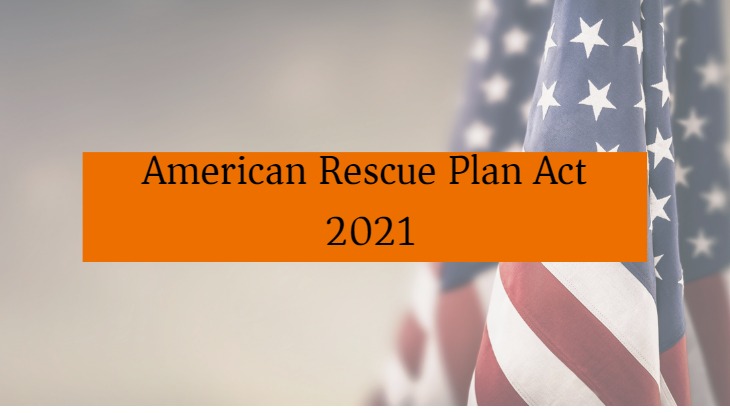The American Rescue Plan Act (ARPA) caters to a broad spectrum of applications to counter the lasting impacts of the COVID-19 pandemic. However, with the range of applicable expenses outlined by the Treasury Department, and new guidance coming out often, there remain many questions about acceptable uses of ARPA funds.
This is the second installment to a two-part series to help address the many questions government leaders may have. While our first installment of the blog series dealt exclusively with ‘How to Calculate Eligible Loss of Revenue,’ our second installment will help you properly understand the various accepted categories of use, deadlines to adhere to, and other related information you will need to ensure proper allocation of funds and transparent reporting.
Here is a breakdown of the most asked questions based on the July 2021 CRF FAQ Breakdown by the Department of Treasury.
What is the American Rescue Plan Act?
The American Rescue Plan Act (ARPA) was passed on March 11, 2021. The legislation offers a wide range of funding and relief for businesses and individuals impacted by the COVID-19 pandemic. The latest figures say $1.9 trillion in stimulus funding is there to aid in the COVID-19 pandemic. From the $1.9 trillion, $350 billion is being distributed among state, local, and tribal government bodies for COVID-19 support and vaccination efforts. As part of this package, local governments are should have already received around $130.2 billion, while tribes and territories across the country received $24.5 billion to help them recover from the impacts of COVID-19.
If you want a deeper dive into ARPA fund allotments, Questica’s OpenBook has a free interactive data visualization tool that allows you to view breakdowns of ARPA funding by state, county, and city.
What are acceptable expenses when considering the allocation of ARPA funds?
According to the Treasury Department’s FAQ breakdown, these are some primary examples of acceptable expenses:
- Supporting public health response
This includes funding towards services and programs that were launched to contain and mitigate the spread of COVID-19 and address behavioral healthcare needs exacerbated by the pandemic. For example, recipients can use these funds to cover the full payroll and covered benefits costs for units or divisions primarily dedicated to COVID-19 response.
- Addressing the negative impacts caused by the public health emergency
ARPA funds have been essential to a wide range of public health emergency uses from delivering assistance to frontline workers and their families to providing monetary support to families of COVID-19 victims. The Act also includes funding to small businesses and various public sector agencies to help address the financial challenges faced during the pandemic.
- Serving the hardest-hit communities and families
The Act includes funding to address health and education disparities as well as childcare and adult welfare. It covers everything from funding for community health workers, housing vouchers, expanded high-quality childcare, and additional resources for high-poverty school districts and afterschool programs to address social, emotional, and mental health needs.
- Investing in water, sewer, and broadband infrastructure
The pandemic also helped cast much-needed attention to developing quality infrastructure in areas that are currently unserved or underserved. This includes funding to projects that deal with the provision of safe drinking water, improving sewage infrastructure, and projects that achieve last-mile connections to households and businesses. It is important to note that this specific category also accounts for funding to address the effects of climate change.
- Replacing lost public sector revenue
For most governments, this is the primary use case for ARPA funds. Many governments are hoping to use ARPA funds to minimize the gap between the estimated revenue versus actual revenue earned during the pandemic. While most of the categories of use are straightforward, when it comes to computing the estimated ‘Loss in Public Revenue,’ the calculations must be comprehensive so that each variable is accounted for to ensure adherence to the expenditure guidelines outlined in the ARP Act itself.
Please note that the US Treasury Department is continually refining its guidance on allowable expenditures under ARPA. Therefore, it is advisable to always check the latest guidance and compliance requirements before making specific expenditures decisions.
What is the time frame provided for estimating revenue loss?
As per the Treasury Department FAQ 3.4, recipients are permitted to calculate the extent of reduction in revenue within four points in time: December 31, 2020; December 31, 2021; December 31, 2022; and December 31, 2023. This approach recognizes that some recipients may experience effects of the pandemic on revenues over extended periods of time. Upon receiving Fiscal Recovery Fund payments, recipients may immediately calculate revenue loss for the period ending December 31, 2020.
Can funds be used to reimburse recipients for costs incurred by state and local governments in responding to the public health emergency and its negative economic impacts prior to passage of the American Rescue Plan?
The Interim Final Rule permits funds to be used to cover costs incurred beginning on March 3, 2021, as the intended use of Fiscal Recovery Funds is generally forward looking.
Is there an eligibility requirement in terms of population size for counties?
All counties that are units of general local government will receive funds directly from the Treasury Department and can apply via the online portal. The list of county allocations is available here.
Do individual local and state governments require official paperwork announcing a state of emergency relating to COVID-19 to receive the funds?
No, the Interim Final Rule does not require recipients to maintain a local declaration of emergency relating to COVID-19.
Can local and state governments transfer ARPA funds to non-profit or private organizations?
Yes. Under section 602(c)(3) of the Social Security Act, a state, territory, or Tribal government may transfer funds to a “private non-profit organization, a Tribal organization, a public benefit corporation involved in the transportation of passengers or cargo, or a special-purpose unit of state or local government.”
A transferee receiving a transfer from a recipient under sections 602(c)(3) and 603(c)(3) will be considered a subrecipient and will be expected to comply with all subrecipient reporting requirements. ARPA does not authorize Treasury to provide CSFRF/CLFRF funds directly to non-profit or private organizations. Thus, non-profit, or private organizations should seek funds from CSFRF/CLFRF recipient(s) in their jurisdiction (e.g., a state, local, territorial, or Tribal government).
Can funding recipients use funds for general economic development or workforce development?
Generally, no. Recipients must demonstrate that funding uses directly address a negative economic impact of the COVID-19 public health emergency, including funds used for economic or workforce development.
Can recipients use funds to assist impacted industries other than travel, tourism, and hospitality?
Yes, provided that recipients consider the extent of the impact in such industries as compared to tourism, travel, and hospitality. Recipients should also consider whether impacts were due to the COVID-19 pandemic as opposed to longer-term economic or industrial trends unrelated to the pandemic. In such cases, recipients should maintain records to support their assessment of how businesses or business districts receiving assistance were affected by the negative economic impacts of the COVID-19 pandemic and how the aid provided responds to these impacts.
What will I need to report to the Treasury?
Metropolitan cities will be required to submit one interim report and thereafter quarterly project and expenditure reports through the end of the award period on December 31, 2026.
The interim report will include a recipient’s expenditures by category at the summary level from the date of award to July 31, 2021, and, for states and territories, information related to distributions to non-entitlement units. Recipients must submit their interim report to the Treasury Department by August 31, 2021.
Non-entitlement units of local government are not required to submit an interim report. Cities will need a valid DUNS number to meet the reporting requirements for the Coronavirus Local Fiscal Recovery Fund.
How do I ensure compliance with reporting?
For reporting purposes, governments will be required to submit a description of services provided. This must be done based on the criteria outlined by US Treasury Compliance and Reporting Guidance. This description may be in narrative or in another form, and recipients are encouraged to report based on their existing budget processes and minimize administrative burden.
Questica Budget’s public sector budgeting software, consulting services, and overall public-sector expertise can help you budget your ARPA funds more efficiently and accurately, no matter how complicated the calculations might be. In fact, Questica has recently released a feature that enables users to automatically compute “Loss of Revenue” as outlined in the guidance provided by the Treasury Department. Since Questica Budget serves as a complete repository of historical budgets, all you need to do is run the “Revenue Loss Formula” instead of combing through stacks of disparate documents and Excel files.
Additionally, when it is time to report your ARPA fund allocations, you can use Questica Reports to calculate and communicate the complete budget summary at the fund, department, and cost center levels.
To learn more about how Questica Budget can help you ensure appropriate allocation and transparent reporting of your ARPA funds – schedule a demo today!





